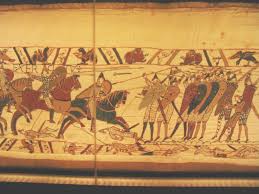Exploring the Bayeux Tapestry: A Cultural Treasure

Introduction to the Bayeux Tapestry
The Bayeux Tapestry is an extraordinary piece of medieval art that not only showcases exquisite craftsmanship but also serves as a vital historical document. Created in the 11th century, the tapestry vividly depicts the events surrounding the Norman Conquest of England in 1066. Its significance in art and history has made it a subject of academic interest and public fascination, attracting thousands of visitors to its resting place in Bayeux, France.
Historical Significance
The tapestry measures approximately 70 metres long and 50 centimetres high, embroidered with lively scenes narrating the story of William the Conqueror’s invasion of England. This timeline begins with the events leading to the claim of the English throne by William, includes the Battle of Hastings, and concludes with King Harold’s death. Beyond its artistic value, the Bayeux Tapestry provides insights into the politics, culture, and warfare of the period, making it an invaluable educational resource.
Current Developments and Preservation Efforts
Recently, discussions have intensified surrounding the preservation and accessibility of the Bayeux Tapestry, particularly as it approaches its 1,000th anniversary in 2066. The tapestry has been continuously preserved since its creation, but environmental conditions and the need for careful maintenance remain critical concerns. In 2023, French officials proposed a £25 million restoration project set to enhance the display of this national treasure while ensuring it is protected for future generations.
Additionally, international interest in the tapestry is booming. Plans are being discussed to exhibit the Bayeux Tapestry in various locations across the United Kingdom and France, further bolstering cultural exchange and tourism. In 2022, a successful temporary exhibition showcased the tapestry in London, drawing widespread acclaim and highlighting its enduring relevance.
Impact on Modern Culture
The Bayeux Tapestry has inspired countless artworks, films, and literature, reinforcing its status as a symbol of historical narrative and artistry. As modern audiences engage with its themes of conquest, power, and storytelling, the tapestry remains a reference point for exploring contemporary issues and historical interpretation.
Conclusion
The Bayeux Tapestry is more than a historical artefact; it is a cultural touchstone that connects us with the past. Its relevance continues to resonate as we examine themes of conflict and power throughout history. As preservation efforts advance and new exhibitions strive to reach wider audiences, the tapestry’s tale remains an essential part of our collective memory, inviting reflection on our shared human experience.









